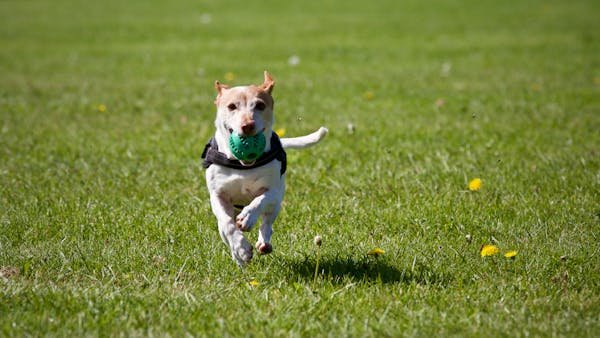Is It Okay to Let My Dog Run Off-Leash?
- 17 November 2024
- BuyAPet Editorial Team
- All Dogs
Is It Okay to Let My Dog Run Off‑Leash?
Seeing your dog zoom free is pure joy—but safety, training and local rules come first. Here’s how to decide if off‑lead time is right for your dog—and how to do it responsibly.
The Freedom of the Wild
Off‑lead time can boost mood, provide natural exercise and let dogs do dog things—sniff, explore and play. Balance that joy with responsibility and situational awareness.
Understanding Your Dog’s Behaviour
Temperament matters. Some dogs orbit close; others love a chase. Consider sociability, prey drive and confidence. If distractions (squirrels! new dogs!) trump you, keep practising on a long line first.
Training Essentials (Your Safety Net)
Reliable Recall
Build a rock‑solid “come” with high‑value rewards. Start indoors → garden → quiet fields before busy parks.
Emergency Stop
Teach a stop or down at distance for deer/cyclist moments. Practise on a long line.
Leave It
Essential for wildlife, food scraps and livestock areas.
Coach’s tip: Short, fun sessions beat long drills. Pay generously when your dog chooses you over distractions.
Off‑Lead Readiness Check
- ✅ Comes when called first time—even with mild distractions.
- ✅ Checks in visually every 10–20 seconds on walks.
- ✅ Comfortable around people, dogs and bikes with no lunging.
- ✅ Wears an ID tag and is microchipped with up‑to‑date details.
- ✅ You’ve practised in safe, enclosed areas on a long line.
Not there yet? That’s OK. Use a 5–10m long line to build skills while keeping everyone safe.
Safe Spaces for Off‑Lead Play
- Designated dog fields and secure paddocks.
- Signed off‑lead zones in parks.
- Quiet, open areas with clear sight lines—only where rules allow.
Always read local signs. Some areas require leads seasonally (to protect wildlife) or near livestock; councils can set additional rules in specific places.
Weighing the Risks
Common hazards
- Roads, cyclists and horses.
- Unfriendly dogs or nervous people.
- Livestock and wildlife—chasing is dangerous and illegal to allow in many settings.
Make it safer
- Choose quiet times/places.
- Use a harness + long line while training.
- Practise check‑ins and quick leash re‑attachment.
Etiquette & Good Citizenship
- Ask before approaching on‑lead dogs—give space by default.
- Recall early when you see wildlife, kids, picnics or runners.
- Bag and bin waste; stick to paths where signed.
- Use a lead around livestock and observe seasonal wildlife rules.
Helpful Gear
Long Line (5–10m)
Bridges the gap between on‑lead and off‑lead while you build recall.
ID Tag + Microchip
Required in many public settings; speed up reunions if you’re separated.
Whistle or Distinct Cue
Consistent sound carries further and cuts through wind/excitement.
FAQs
Is off‑lead ever unsafe? +
Yes—near roads, around livestock, during wildlife nesting seasons, or where signs require leads. Choose secure areas instead.
What age can I try off‑lead? +
There’s no magic age. Start recall in safe, enclosed spaces on a long line once vaccinations allow outdoor walks, and progress gradually.
My dog ignores recall outside—help! +
Go back a step: use a long line, increase reward value and practise around mild distractions before harder ones. Keep sessions short and fun.
What should be on the ID tag? +
Your surname and address are standard; many add a mobile number. Check local legal requirements where you live.
Do beaches/parks have special rules? +
Often yes—seasonal restrictions, dog‑free zones and lead requirements may apply. Always follow posted signs.
General guidance only—always follow local laws and posted signs, keep dogs under effective control and consider others.
